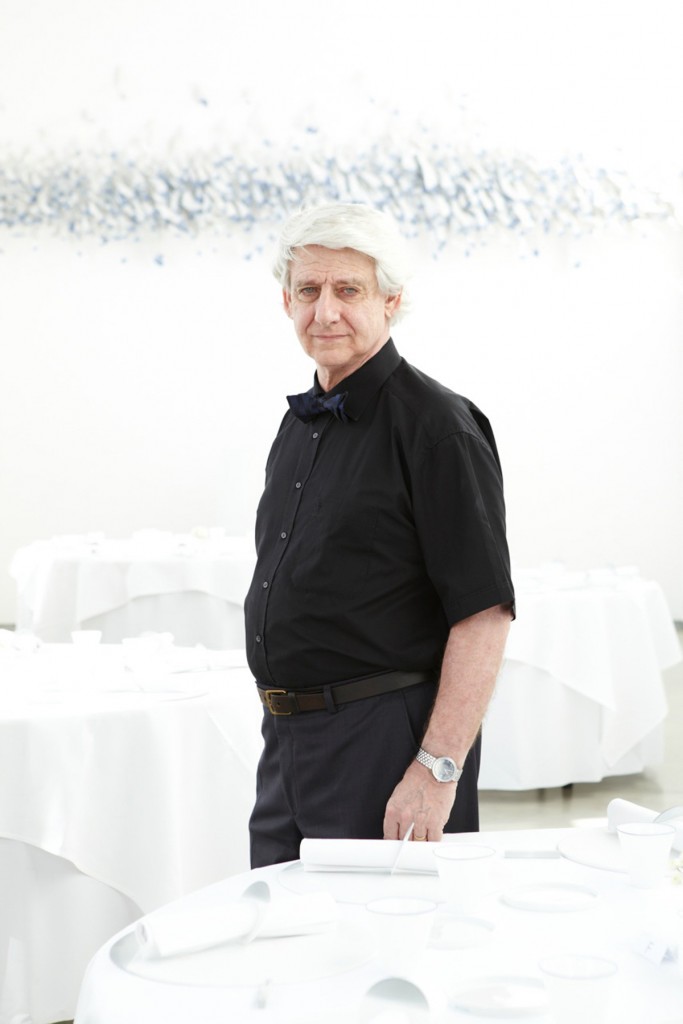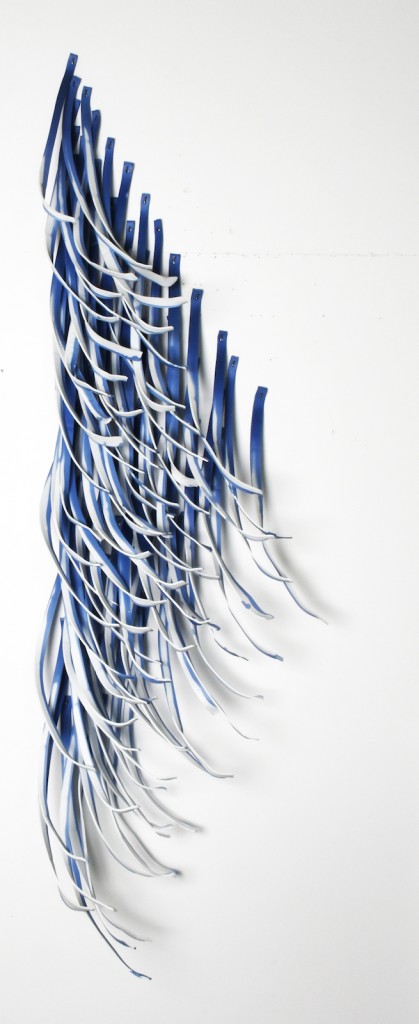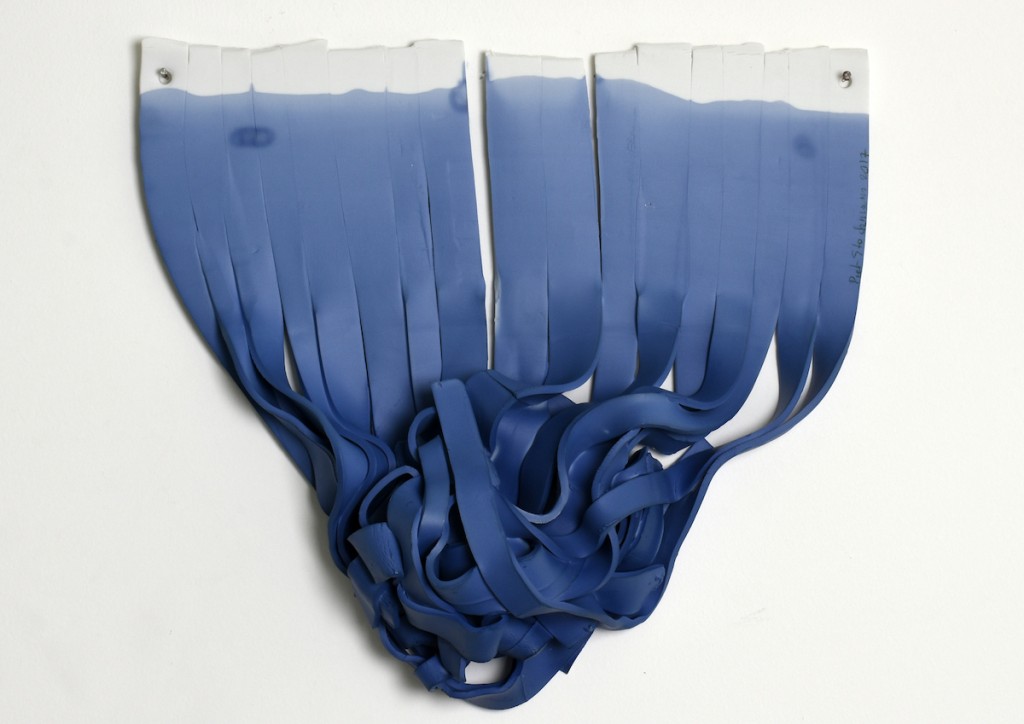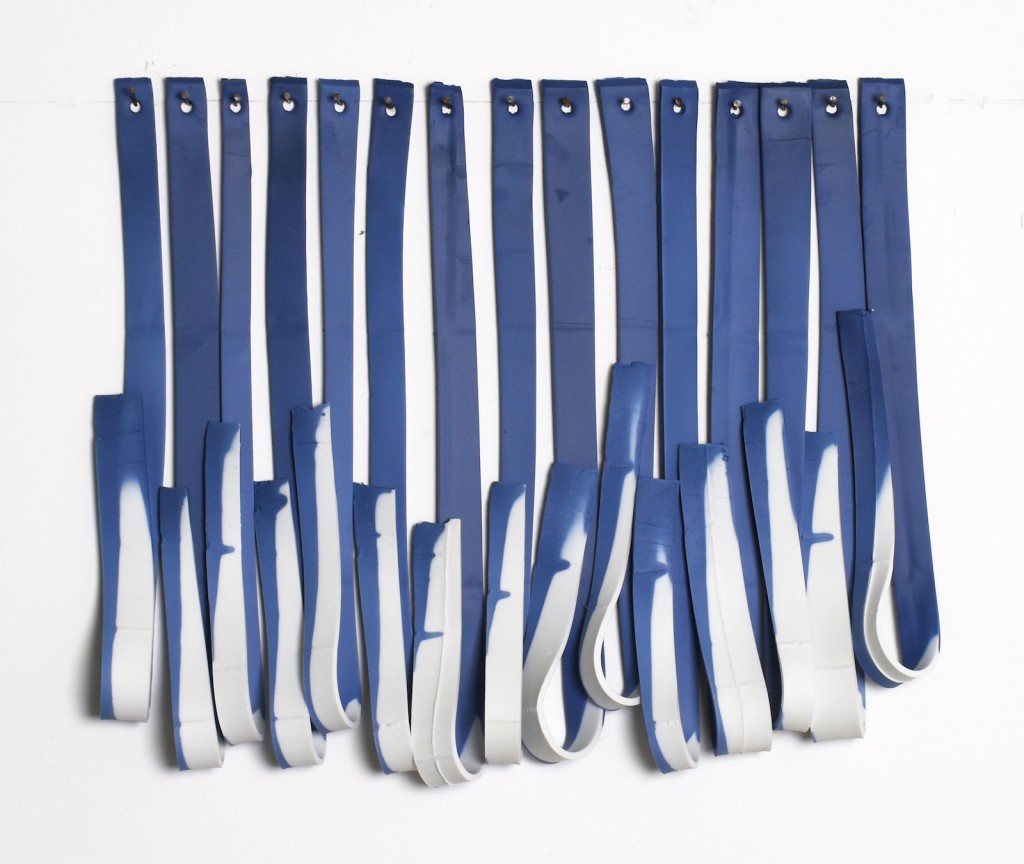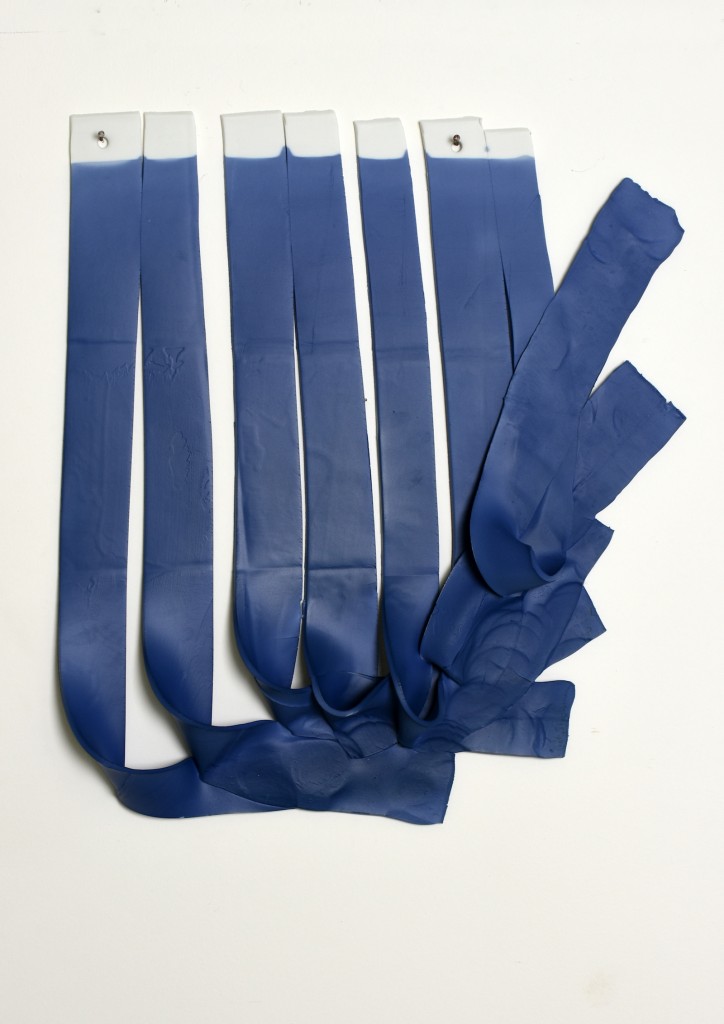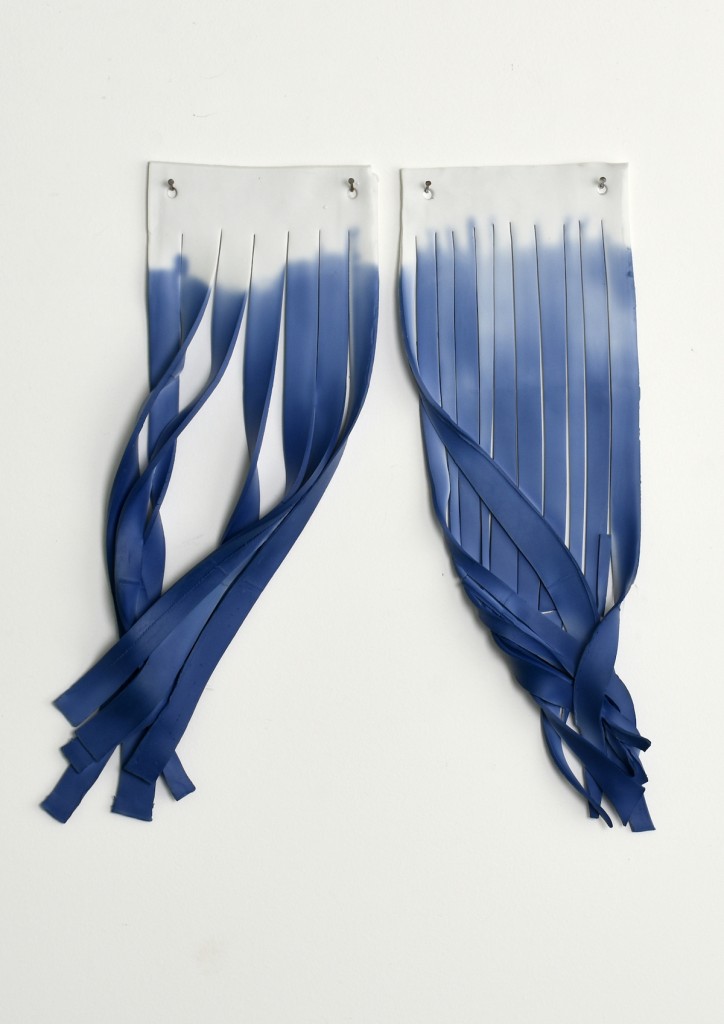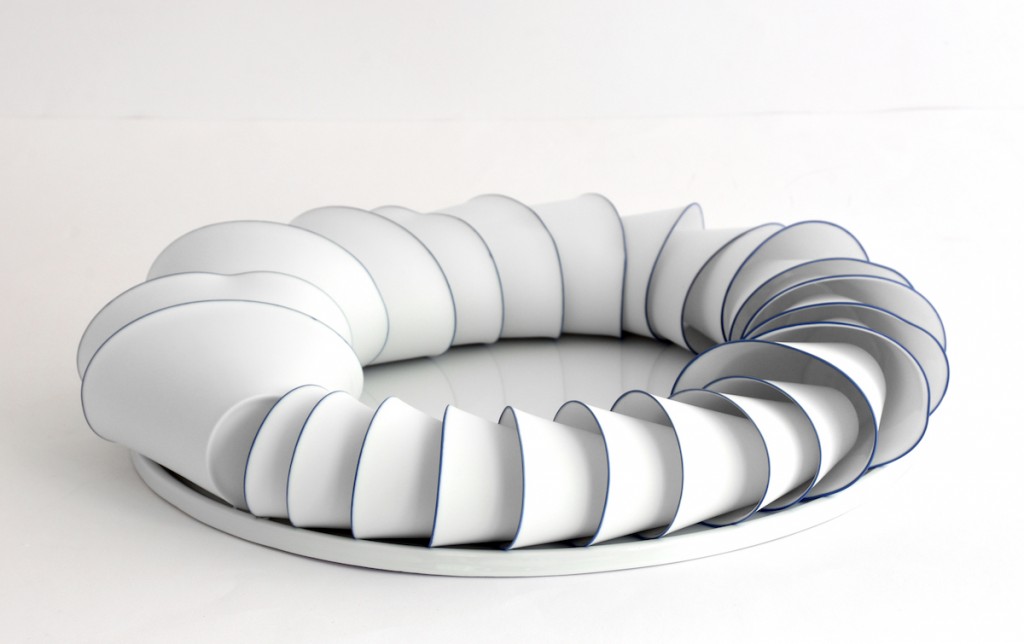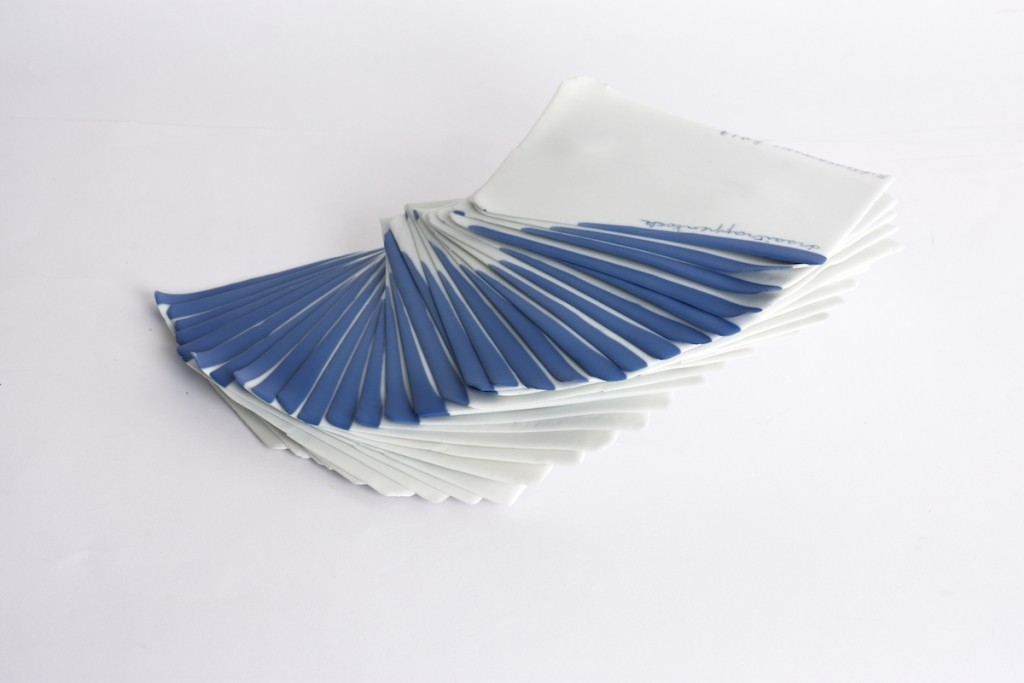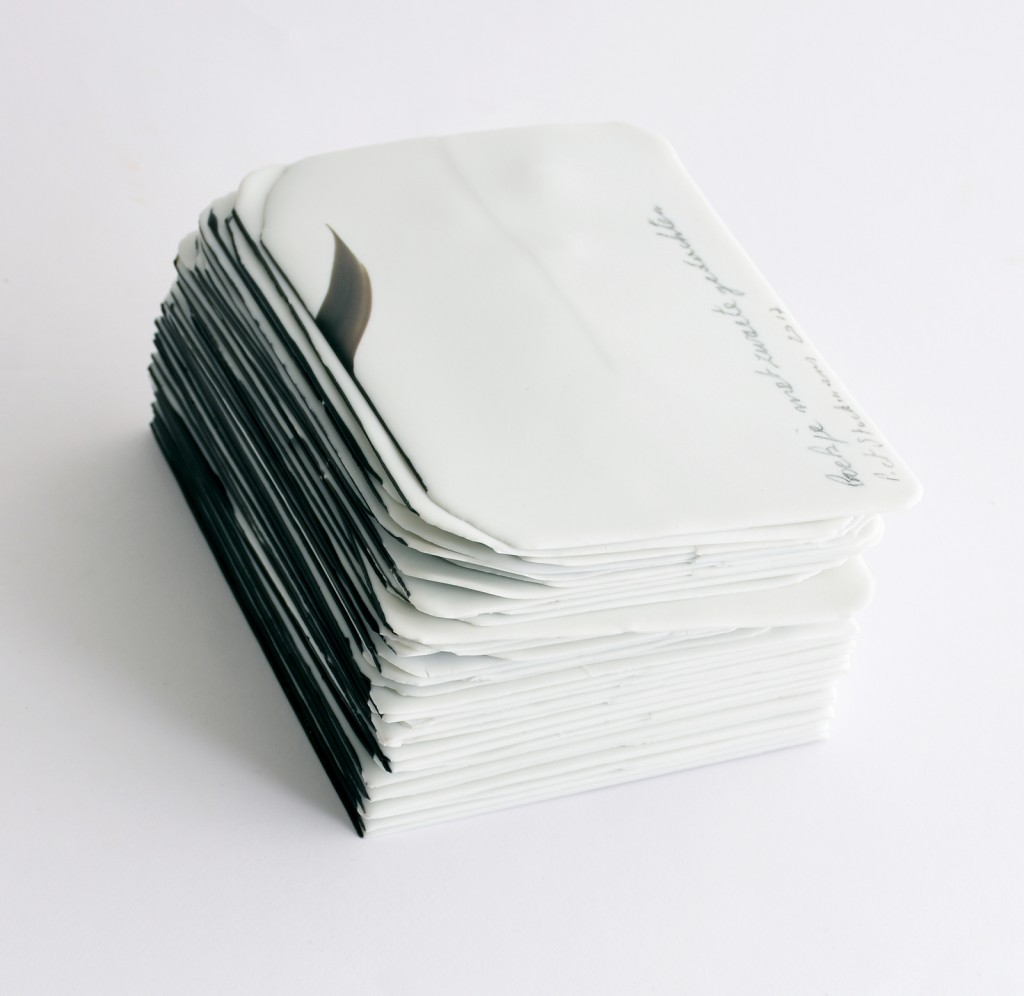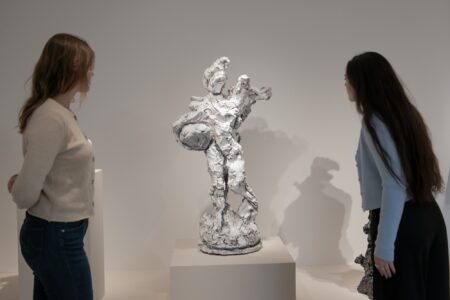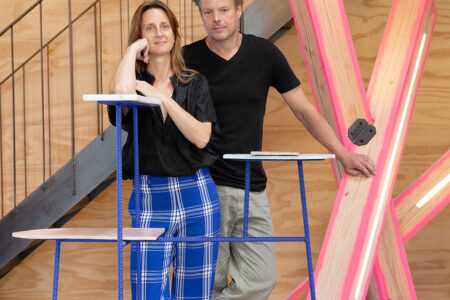Piet Stockmans Takes His Blues to Collect
The Belgian master ceramist is leading Collect visitors Into the Stockmansblauw with a set of wall installations and some rather philosophical objects
Belgian designer Piet Stockmans has a piece of advice: stop wanting to know everything, and just enjoy the calm of art. But in case of emergency, you can break one of his porcelain books. Really.
That’s the gist of his presentation with Spazio Nobile at this year’s Collect fair in London, where he’s inviting visitors Into the Stockmansblauw: there’s a set of porcelain wall installations in different sizes, a series of calming, chained objects and books that dare you to break them.
We spoke with the master ceramist about the importance of not being in love with his material of choice, his relationship to the Michelin-starred world and how we should all stop trying to Google everything.
ABOUT HIS TAKE ON R&D
My whole work, my whole life has been research and development. I do everything about tactility and vulnerability. These are the themes you find in my work. I always try to explore other possibilities of porcelain, to a point that I’m satisfied. Then I start again with a new exploration of the material.
It looks like it’s about chemistry and minerals, but it’s not. I buy the best quality of porcelain and the best kiln, the best oxide and I make my work. My studio is a laboratory: I do a lot of things, but the kilk and the materials do the rest. I like to be surprised by what comes out of the kiln. My art is research.
In my work, everything has to do with handling. The wall installations are mad of elements, and I try to express something with them… but it’s always an adventure! It’s the body doing a lot of things —the pieces are not in my mind. Every second, you have to decide what you do. It’s doing, the handling. You should feel it growing —it’s like action painting!
ON THE MATERIAL
I work with high-temperature porcelain, like the one used in Limoges. It’s a very difficult material, but after 50 years working with it, I can handle it the way I want. I’m not in love with it. The day I run out of possibilities regarding what to do with it, I’ll just use another material. I’m not a traditional ceramist, in this way… because if you’re in love with a material, you’re blind.
I use industrial materials because I came from that industry, but I feel free.
HOW IDEAS ARE LIKE A MUSCLE
The harder you work, the more ideas you have. Sometimes it’s not a new idea, but it’s related to another one. If I make it, I can find another idea —like a waterfall. The important thing is to always keep working.
ABOUT THE ODD NAMES FOR HIS WALL INSTALLATIONS
The smaller installations are exercises to make the larger ones. It’s like sketches on paper for a painter. And it’s better that they have a name, so I don’t have to call them 1, 2, 3, 4, 5. It’s more an impression of mine of the work.
I work the whole time. It’s been 50 years now. I hang up my work in my studio, and after two weeks people come and they start a discussion, and at a certain moment I have to send it to an exhibition. They say they need names, so I give them names [Ed’s note: Such as Successful Marriage and Leave Me Alone].
ABOUT THE RESTAURANT INDUSTRY
Here in the studio we make high-quality porcelain for Michelin-starred restaurants. 10 years ago the restaurants had very special food: three kinds of potatoes in blue and red. Today we can buy 35 kinds of potatoes! So nowadays, originality is not just found in the materials: it’s also on the dinnerware. It used to be secondary some 15 years ago, but nowadays it plays an important role in a restaurant.
I develop a new plate every week, very clean, very simple. I always tell chefs that this is half of what they’re serving, but they have to complete it with their work. Chefs are very inspired by my plates because they see the possibilities to present food in another way. These restaurants are doing research the whole time, focusing on new kinds of presentations. I think that’s why our small factory has been successful —we have about 100 restaurants all over the world.
ABOUT THOSE BREAKABLE BOOKS
People want to know everything. So I’ve written something in these books, and inside of these books are dilemmas: you have to make your choice, because if you want to know what’s inside the book you have to break it, and then you won’t have a work of art… or you can keep the work of art but not know what’s inside the book.
The idea is that you should stop at a certain moment: you can’t know everything, and you need to let thing rest. So the book is also nice if it’s closed. If you know what’s inside the book, for sure you’ll be asking new questions and new questions and new questions. We want to Google everything. There’s no end! You’ll never be satisfied! There’s no calm! So please, why not look at how nice the books are on their own?
Collect will take place from February 22-25 at the Saatchi Gallery in London
